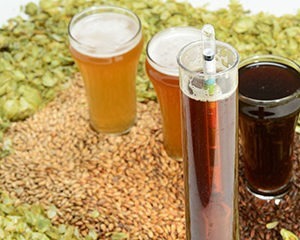The Basics of Sour Beer
I penned a story for Brew Your Own that ran in the October 2008 issue titled “Sour Mashing Techniques.” Reading it brings a chuckle to me as I recall some of the beers I brewed using sour mashing. From a Guinness Extra Stout clone that turned out really good to a funky Kentucky common, that was borderline drinkable. It’s amazing how far the brewing community has come in terms of sour beer production in that time. Kettle souring has probably been the biggest change, but the more recent focus on acid-producing yeast strains has been exciting in its potential. It’s been a boon for fans of sour beer and I’m sure we’ll see continued development in this arena.
The Many Ways To Sour
I divide the methods to produce sour beers into five main categories: Traditional souring, direct acid additions, sour mashing, kettle souring, and utilizing acid-producing yeast. I’ll give a brief introduction to each as well as pros and cons.
Traditional souring requires the most patience and can also be by far the most rewarding . . . think lambics, gueuze, and Flanders red. If you can get your hands on a neutral oak barrel, traditional sour beer production should be your goal (in my humble opinion, of course). This technique employs souring organisms such as Lactobacillus and Pediococcus, introduced sometime early in the fermentation cycle, to bring the tartness. Over time these critters, along with other microorganisms, will introduce acids and many flavor-active compounds that can either bring great complexity to the beer . . . or bring it to ruin. Diligence is required to make sure bacteria like Acetobacter doesn’t turn your beer into malt vinegar. For more on these styles and techniques, visit https://byo.com/article/return-of-a-classic-sour-ale/
Direct acid additions are good for a mildly sour beer. Adding lactic or phosphoric acid to the beer or acidulated malts to your grain bill will drop the pH and may be all that is needed for a beer like a Gose. But you would not want to produce a beer like a lambic by simply adding some acid.
Sour mashing is now an all-but-defunct technique of crafting sour beers but a well-known practice in whiskey production. The basics are that you perform a normal mash, then cool down to around 110 °F (43 °C) and add some fresh grain to provide souring organisms that are naturally found on the husks.
Over the course of several days the wort sours with the grains. One of the biggest problems with this technique is that clean-souring bacteria aren’t the only microorganisms found on grains. Brewers can help out by a direct acid addition after cooling to give the beneficial souring organisms a head start. Usually I like to acidify to about a pH of 4.5, but I know some brewers go a bit lower.
What I found is that there is a time and place for sour mashing since it does add some complexity and character to the final beer, more than kettle sours. Using a small percentage of the total mash in a sour mash, starting a few days prior to brew day, and performing it in a highly controlled environment like an Erlenmeyer flask, provides the most likely scenario for success. If interested on reading more, visit https://byo.com/article/sour-mashing/
Kettle souring is fairly similar to sour mashing, the biggest difference being that brewers are separating the wort from the grains, and usually boiling, prior to inoculating with the souring organisms. This allows for a clean souring process. After separating the wort from the grain, often an acid such as phosphoric or lactic is added to drop pH levels just like in sour mashing. This discourages many potential spoilage bacteria from gaining a foothold.
A pure culture of Lactobacillus is often then inoculated in the wort and held at a recommended temperature for one to two days. After the incubation period the wort is typically brought to a boil to kill the bacteria and a bit of hops is often added. Next a brewer’s yeast is pitched. Unfortunately, this pasteurization process will drive off many volatile compounds created during the souring process that would have positively impacted the beer.
Please note that kettle souring should not be performed in an aluminum pot. Stainless steel and glass are the best for this purpose. For more on this, including a DIY kettle-souring fermenter, check out https://byo.com/article/the-lacto-lounge/
Acid-producing yeast strains are a fairly new focus in the beer world. There are now several strains available to brewers that can be a natural, hybridized, or bioengineered strain that produces acid as a fermentation by-product. Some strains, most notably the natural ones, should be sequentially inoculated with brewer’s yeast . . . in other words, add the acid-producing yeast first, then a few days later add a brewer’s yeast. One of the major advantages of this form of acid production is that brewers are not boiling the beer after acid production and therefore not losing aromatics that could positively contribute to the final beer. For more on these strains, visit https://byo.com/article/alternative-souring-methods-acid-producing-yeast-strains/
Once the beer has been properly soured then the fun can really begin. Fruit and spice additions are not only traditional but have gained steam in terms of popularity in recent years. Where you go is up to you.



